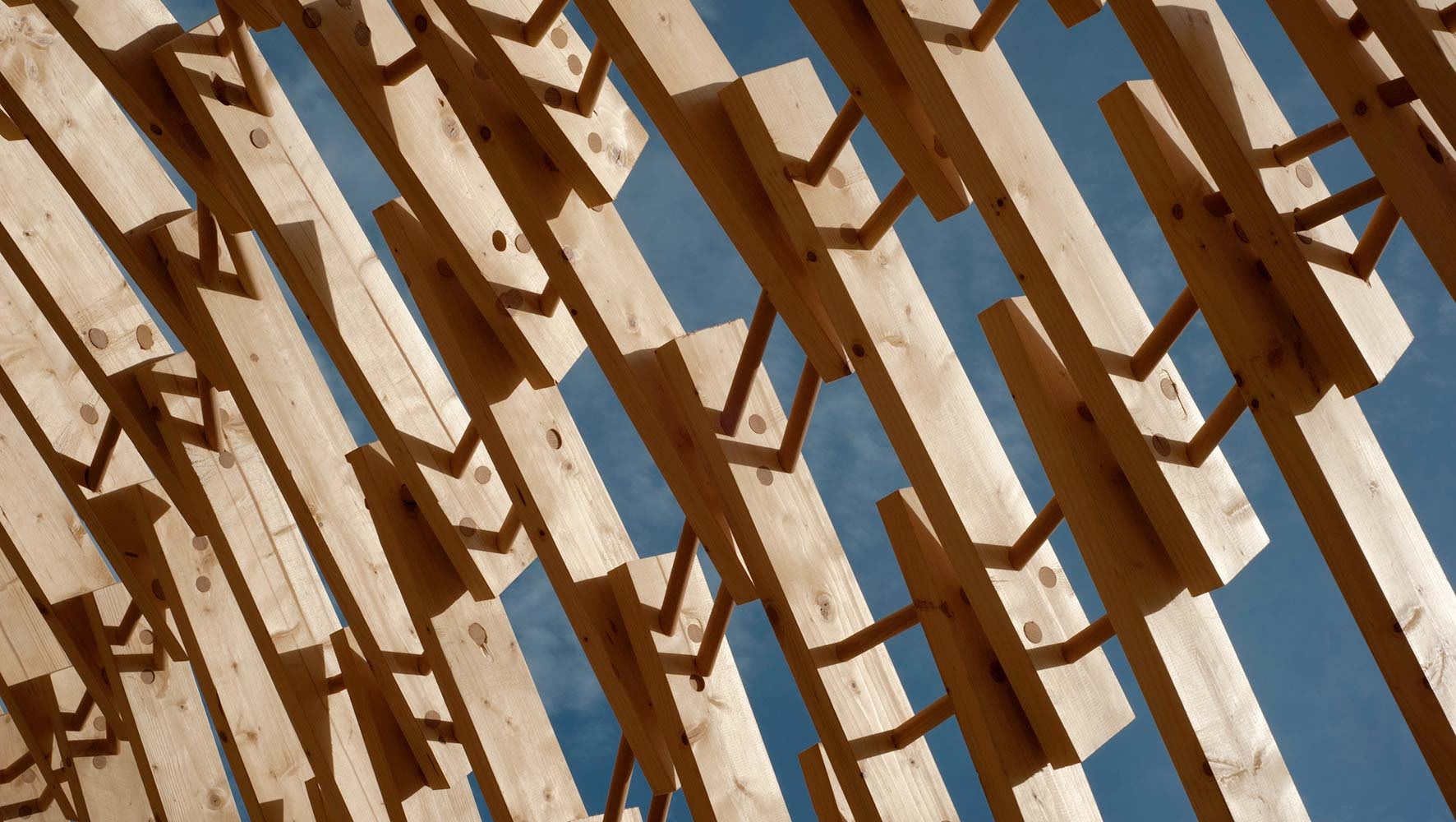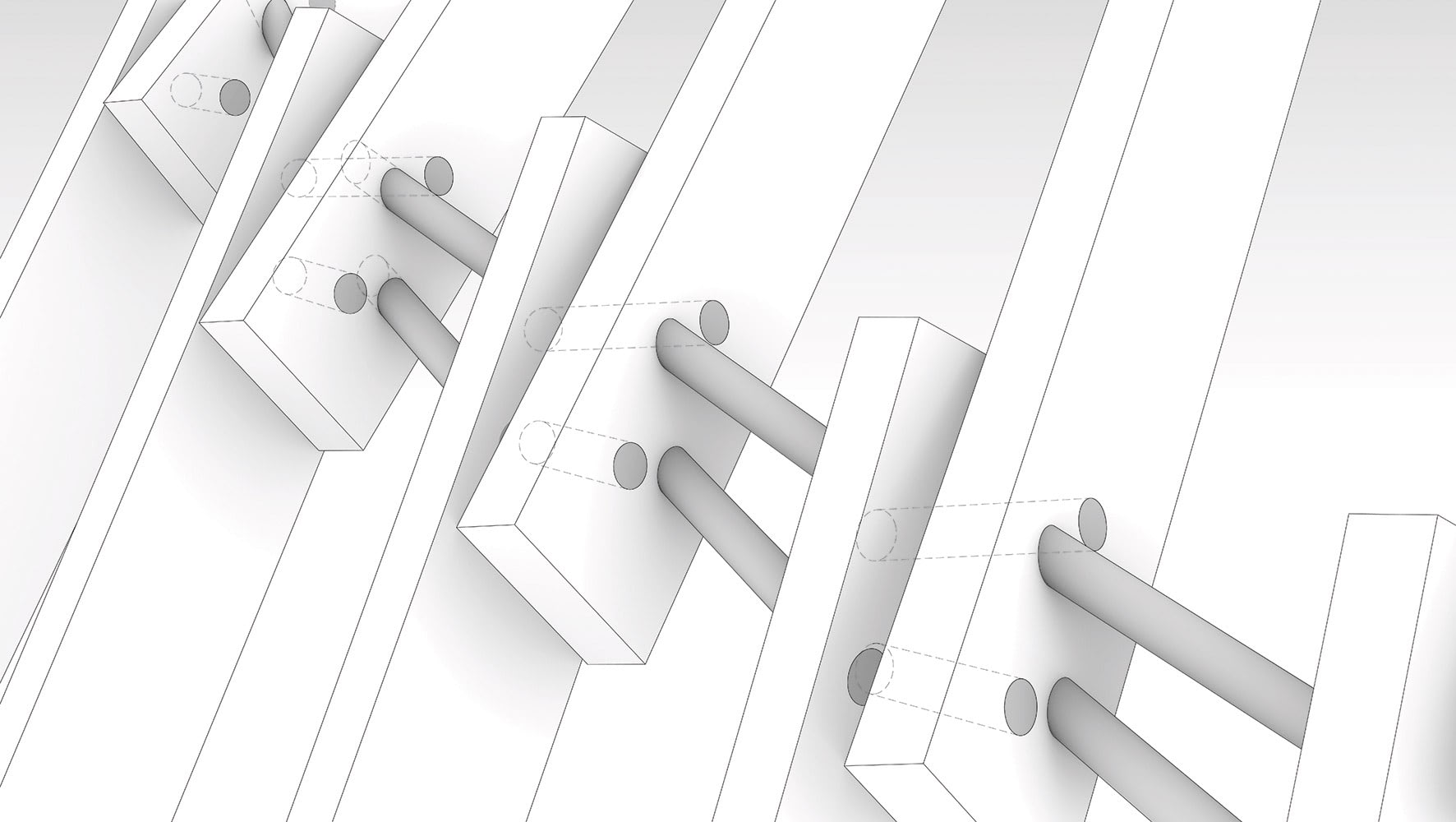Thu 15 Sep
10:50
David Jenny, ZHAW
Speculations towards a digital building culture
Rather than considering digital and analogue processes as opposite, the digital can be understood as a potential extension of the conceptual and constructive space of possibilities in architecture. As such, the digitalisation or automation of conventional planning or fabrication processes with the pure goal of an increased efficiency becomes secondary, while the meaningful employment and coherent integration of digital technologies in our professional practice, contributing to address today’s local and global challenges, becomes key [Jenny, 2022]. This article illustrates how the development of novel constructive systems can be closely linked not only to a technological context but considered within topics of sustainability such as the reusability of structures and the ecology of materials, while exploring their design potentials. The paper introduces a selected constructive system, discusses an implemented case study demonstrating how conceptual design ideas can be connected to material behavior and a constructive logic through the integration within a digital process chain from design to fabrication, and ends with a reflection and speculation on how the proposed approach could be further developed and applied in regular, everyday building production.
While inspired by timber-only joints of middle-European and Japanese carpentry tradition, on a conceptual level [Zwerger, 2015], the constructive system Timber Dowel Assemblies follows a radically digital approach. Rather than trying to replace a manual craft by automation, a novel joint typology is developed that combines the potential for geometric complexity of computational design, and the ability for precise spatial positioning of robotic arms, with the natural material properties of timber. Here, simple Spruce slats are held in space and connected through oriented Beech wood dowels to form a spatial joint [Thoma et al., 2019, 77–88]. The constructive system becomes ecologically meaningful, as the profiles used are of small cross-sections and the timber-only construction is easy to build back. When neither a purely manual production nor a completely automated fabrication makes sense, this spatial joint type can only be conceived through a conceptual understanding for the potential to combine human craft with digital fabrication and as such, demonstrates a possible approach to foster the invention of novel constructive ideas.
The formulation of the joint and its geometric limitations play a central role in the constructive system of Timber Dowel Assemblies and the type of joint becomes an important element, defining the design space by introducing structural as well as fabrication constraints. As there are infinite possible combinations of dowel-slat connections, and every combination brings its own constraints, the optimisation of the joint is a complex problem [Jenny et al., forthcoming]. The paper describes the development and implementation of different joint typologies in relation to real-scale building projects realised together with students within the curriculum of a post-graduate programme at ETH Zürich (MAS ETH DFAB). It then offers an outlook perspective on how the ideas presented here can be contextualised within the omnipresent notion of digital transformation of building processes, and illustrates a possible understanding towards a digital building culture.
List of References
Jenny, David. 2022. „Daten in Material giessen. Digital-analoge Konstruktionen.“ In Digitalisierung und Architektur in Lehre und Praxis, edited by Patric Furrer, Andreas Jud, Stefan Kurath, 87–96. Zürich: Triest.
Jenny, David, Mayer, Hannes, Aejmelaeus-Lindström, Petrus, Gramazio, Fabio, Kohler, Matthias. forthcoming. „A Pedagogy of Digital Materiality: Integrated Design and Robotic Fabrication Projects of the Master of Advanced Studies in Architecture and Digital Fabrication.“ In Architecture, Structures and Construction, ICSA2022 Special Issue.
MAS ETH DFAB. Master of Advanced Studies in Architecture and Digital Fabrication, ETH Zürich. → www.masdfab.com, last accessed 05.05.2022
Thoma, Andreas, Jenny, David, Helmreich, Matthias, Gandia, Augusto, Gramazio, Fabio, Kohler, Matthias. 2019. „Cooperative Robotic Fabrication of Timber Dowel Assemblies.“ In Research Culture in Architecture, edited by Comelie Leopold, Christopher Robeller, Ulrike Weber, 77–88. Basel: Birkhäuser.
Zwerger, Klaus. 2015. Das Holz und seine Verbindungen, Traditionelle Bautechniken in Europa, Japan und China. Basel: Birkhäuser.

Timber Dowel Assemblies, Gradual Assemblies project; constructive system using oriented dowels to form a spatial joint. A timber-only construction combining a digital fabrication approach with computational geometry and manual craft. © Martina Cirese

Timber Dowel Assemblies, Diagram; connection detail of the spatial timber dowel joint. The geometric orientation of the dowels in combination with the frictional force between dowel and timber slat forms a strong mechanical connection. © Gramazio Kohler Research, ETH Zürich
David Jenny
David Jenny (*1987) is a practicing architect and researcher with a focus on digital fabrication and computational design methods. Currently he is a senior research associate at the Center for Building Technologies and Processes, Zurich University of Applied Sciences. He has studied at the EPF Lausanne, the University of Tokyo, and holds a MSc in Architecture from ETH Zurich, where his diploma project on algorithmic methods for housing design was awarded with the sia master price. He has worked in architectural offices in Switzerland and Japan and as a researcher at the Future Cities Laboratory, Singapore. From 2015–2021 he was part of Gramazio Kohler Research, responsible for courses in the Architecture curriculum and since 2016 leading the teaching projects of the post-graduate programme MAS ETH in Digital Fabrication.